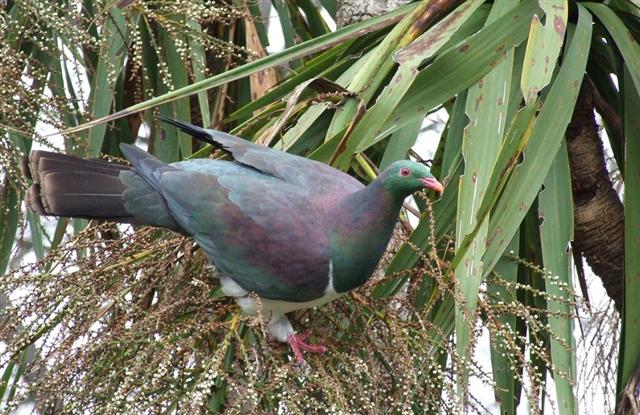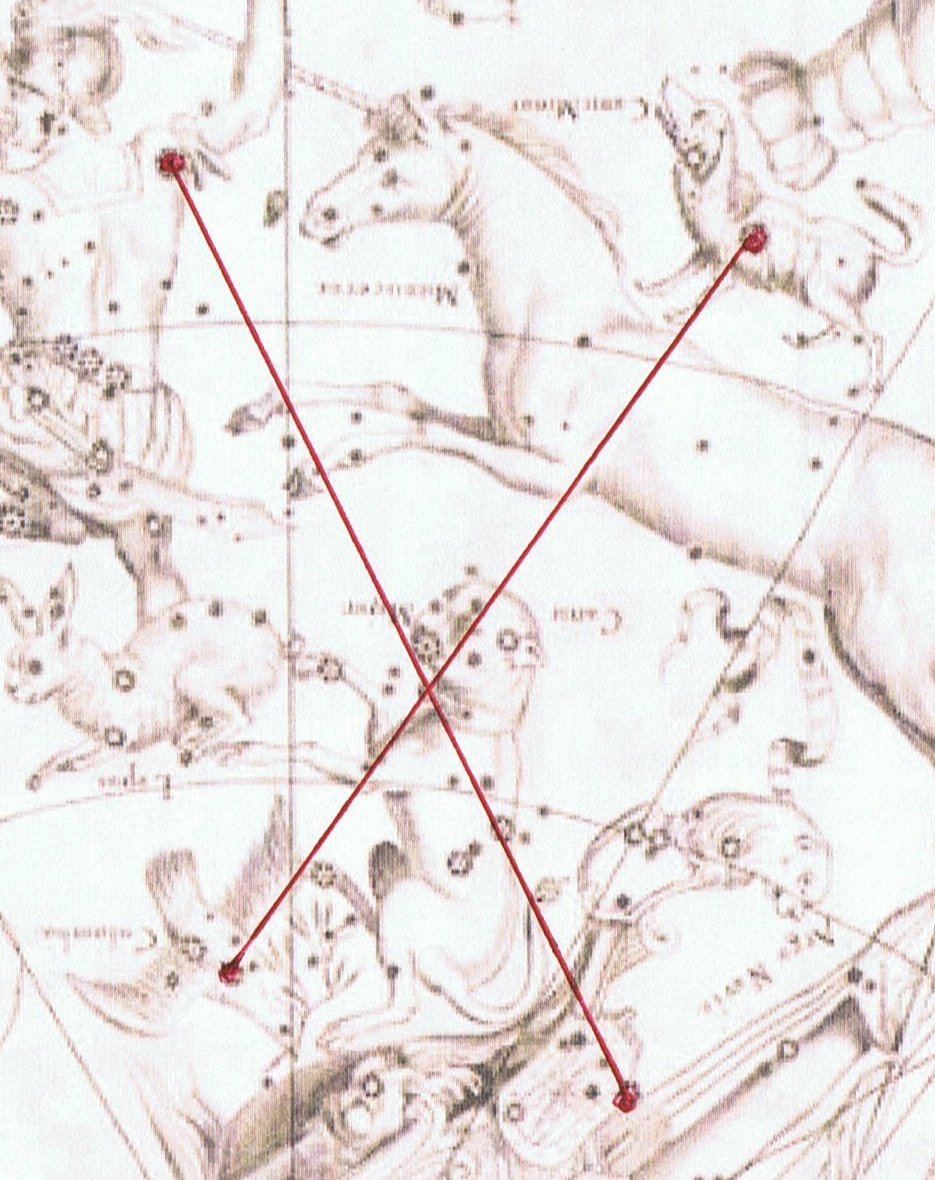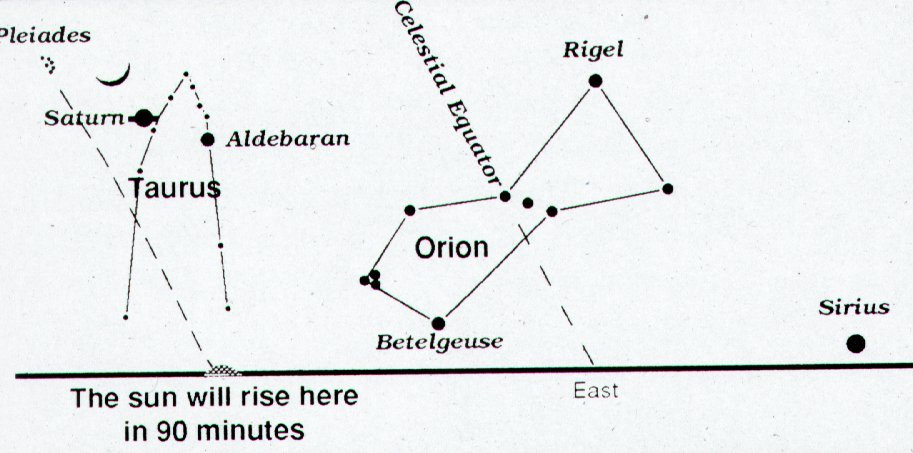110. The first of these moko glyphs (Ca10-16) was at heliacal Betelgeuze and 28 days later came Pollux, at another moko - and 28 days was 4 weeks. Counting was necessary for reaching meaning. ... Interestingly, since another meaning of shi is 'death', the number 4 is considered unlucky. For example, the floor numbering in hotels sometimes jumps mysteriously from 3 to 5; it is also considered unlucky to give four of something as a present ...
On Easter Island the dark season made it easy to see the stars. North of the equator it was the opposite. Therefore, when Maui went down to visit his parents in the world below he assumed the shape of a wood pigeon:
... Now Maui had already performed some of his magic for them on the night when they first set eyes on him, in the meeting house. On that occasion, in front of all his relatives, he had transformed himself into all kinds of birds that live in the forest. None of the shapes he assumed had pleased them particularly then, but now he turned himself into a kereru, or wood pigeon, and with this they were delighted. 'Heavens!' they said. 'You do look handsome. Much more beautiful than the birds you showed us last time.' What made him look so splendid now was that he was wearing the belt and skirt he had stolen from his mother that morning. The thing that looked so white across the pigeon's breast was his mother's belt. He also had the sheen of her skirt, that was made of burnished hair from the tail of a dog, and it was the fastening of her belt that made the beautiful feathers at his throat. This is how the wood pigeon got its handsome looks ... In the south the night sky had Procyon lower down than the Pigeon, and when north of the equator the path of the Sun (and the other planets) went down from Betelgeuze to the Stern of Argo Navis it went up south of the equator, up from Columba to Canis Minor:
... Maui flew down to the tops of the trees and, without being noticed by any of the people, perched on a branch that enabled him to see them. Almost at once he recognized Taranga, sitting on the grass beside her husband, a man who by his dress and demeanor was plainly a chief. 'Aha,' he cooed to himself, 'there are my father and my mother just below me.' And soon he knew that he was not mistaken, for he heard their names when other members of the party spoke to them. He flopped down through the leaves and perched on the branch of a puriri tree thad had some berries on it. He turned his head this way and that, and tilted it on its side. Then he pecked off one of the berries and gently dropped it, and it hit his father's forehead. 'Was that a bird, that dropped that berry?' one of the party asked. But the father said No, it was only a berry that fell by chance. So Maui picked some more berries, and this time he threw them down quite hard, and they hit both the father and the mother and actually hurt them a little. Then everyone got up and walked round peering into the branches of the tree. The pigeon cooed, and everyone saw it. Some went away and gathered stones, and all of them, chiefs and common people alike, began throwing stones up into the branches. They threw for a long time without hitting the pigeon once, but then a stone that was thrown by Maui's father struck him. It was Maui, of course, who decided that it should, for unless he had wished it, no stone could have struck him. It caught his left leg, and down he fell, fluttering through the branches to the ground. But when they ran to pick the bird up, it had turned into the shape of a young man ... In Ca11-15 the left leg has been severed - given that we can perceive Moko as having been turned upside down to face downwards:
All these stones they threw towards the Wood Pigeon without effect should have signified stars. And when his father, the great Rangi, threw Pollux at him Maui turned into a young man. ... Our true father, without any doubt, is great Rangi the Sky, whose offspring provide us with trees for our houses and birds and fishes for us to eat, and sweet potatoes and fern root. And who was it that sent those other offspring down to help us - Touarangi [To-Ua-Rangi], the rain that waters our plants. Hau ma rotoroto, the fine weather that enables them to grow, Hau whenua, the soft winds that cool them, and Hau ma ringiringi, the mists that keep them moist? Did not Rangi give us all of these to make our food grow, and did not Papa make the seeds sprout in the earth? You know all this ... And there was a Tree which grew only down in the Underworld - kua noho te vai according to how Metoro read the C text: ... Away flew Maui in his pigeon shape, with his brothers admiring him as he went. But as soon as he was out of sight he wheeled about, and flew to the clump of rushes that marked the place where his mother disappeared. He came down, in his noisy pigeon way, and strutted about for a moment. Then he lifted the rushes. He flopped into the hole and replaced the clump behind him, and was gone. A few strokes of his wings took him to that other country, and soon he saw some people talking to one another on the grass beneath some trees. They were manapau trees, a kind that grows in that land and nowhere else ... Metoro identified this kind of tree (with very little - pau - life force remaining) as the Toromiro, which grew nowhere else than down in the watery Rano Kau on Easter Island:
The creator of the C text placed his Toromiro tree 10 days earlier than Betelgeuze, viz. at the place defined by Rigel and Capella - and with a 'rain dot' in front to make the reader understand:
|
|||||||||||||||||||||||||||||||||||||||||||||||||||||||||||||||||||||||||||||||||||||||||||||||||||||||||||||||||||||||||||||||||










